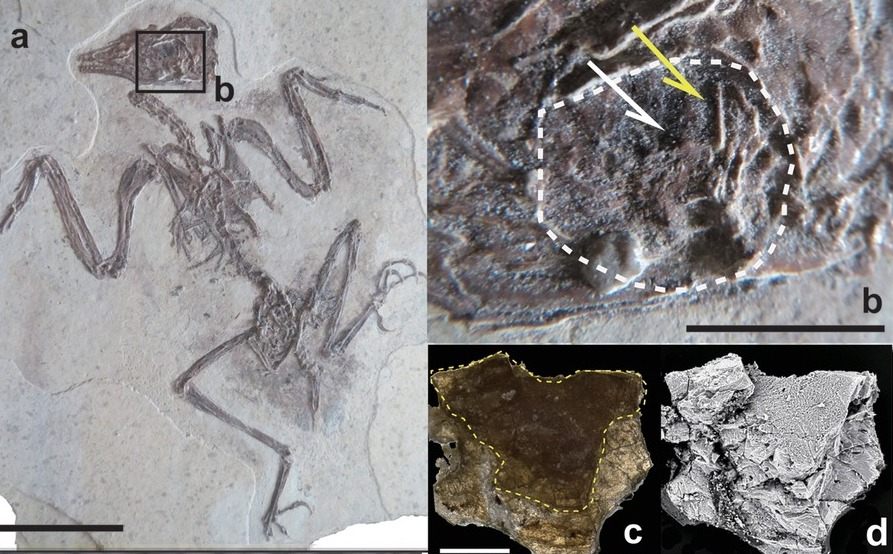An Amazing Fossilized Eye Reveals How an Ancient Bird Saw
Feast your eyes on this.

In Liaoning Province, China, a collector came across the remains of an astonishingly well-preserved bird fossil from around 120 million years ago. Like some modern birds, this five-inch specimen (the species doesn’t yet have a name) had a long neck and tail, sharp talons, and the bone structure to support a plump, wing-powering breast. Unlike modern birds, it had a beak full of snaggleteeth.
It’s tempting to focus on how this ancient bird looked, but it’s much more interesting that this fossil is revealing what this creature, and other extinct birds, may have seen. Extraordinarily, and for the first time on record, the bird’s delicate soft eye tissue had been mineralized, allowing scientists to glean some key information about its capacity for vision. Researchers from the Shanghai Natural History Museum published their findings on the fossil last month in the journal Heliyon.

From examining the eyes of modern birds, we know they can see a dazzling array of colors—all the ones we see, a whole lot of bonus hues, and then whatever weirdness the ultraviolet range shows up as. Like us, they do this with light-sensitive tissue in the back of their eyes—the crucial rods (which show gray tones) and cones (for sensing color). Unlike ours, but like those of fish, amphibians, and reptiles, birds’ eyes have an oil droplet at the tip of the cone cell that acts like a camera filter, revealing ever more colors.
By scanning the fossil with an electron microscope, researchers were stunned to see the tiny cone cells and oil droplets preserved within. From these, coresearcher Baochun Zhou told Live Science, we know that this tiny bird saw in color. What’s more, he said, it “indicates that the complex optical system of cone cells had already been achieved by 120 million years ago.” The sparrow-sized fossil is providing a fascinating ancient bird’s–eye view.





















Follow us on Twitter to get the latest on the world's hidden wonders.
Like us on Facebook to get the latest on the world's hidden wonders.
Follow us on Twitter Like us on Facebook